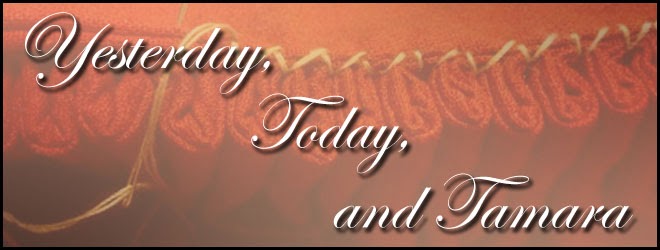Another old-but-new tutorial! This one focuses on creating buttonholes by hand, as not everyone has a sewing machine with a buttonhole attachment. Besides, hand sewn buttonholes have a unique charm that machined ones lack. How many times can I say 'buttonholes' in a paragraph? Buttonholes.
__________________________________________
Buttonholes are an essential part of any garment, especially
on men’s clothing. They can be found at the center front of a doublet, the
sleeves’ wrists, and various forms of pants. During the Renaissance period, buttonholes sat
perpendicular to whatever they were closing up. This means that your doublet’s
buttonholes would sit horizontally, as well as those on a wrist closure. They
are rather simple to do, once you get the hang of the stitch. Like most of what I do, these are the quick and dirty version. We could do them the prettier way, but this method is easy and only requires learning one new stitch. And my way has more character. Yeah, character.
What you’ll need:
Your garment
Needle
Scissors
Thread (preferably buttonhole twist, though embroidery floss
can do in a pinch)
 Step 1: Decide just how large it needs to be. Generally, when
you’re sewing a buttonhole, your stitches are going to close up the space a
bit. Plus, you want a little bit of room to be able to button a garment with
ease. The button I’m using is about ¾”, so I’m going to mark the hole at 1”.
Step 1: Decide just how large it needs to be. Generally, when
you’re sewing a buttonhole, your stitches are going to close up the space a
bit. Plus, you want a little bit of room to be able to button a garment with
ease. The button I’m using is about ¾”, so I’m going to mark the hole at 1”.  Step 2: Carefully make your incision, ensuring that you have evenly
cut through all layers of your garment.
Step 2: Carefully make your incision, ensuring that you have evenly
cut through all layers of your garment. Step 3: Starting from the backside of the garment, let your thread
form a loop over the buttonhole. Pass the needle over the top of the loop, into
the buttonhole, through the garment, and back over the thread. Pull your thread
taut, and you have completed your first buttonhole stitch! Buttonholes look
best when they’re sewn about 1/8” to 1/4” from the edge of the cut.
Step 3: Starting from the backside of the garment, let your thread
form a loop over the buttonhole. Pass the needle over the top of the loop, into
the buttonhole, through the garment, and back over the thread. Pull your thread
taut, and you have completed your first buttonhole stitch! Buttonholes look
best when they’re sewn about 1/8” to 1/4” from the edge of the cut. Step 4: Continue stitching your way around the hole in the same
manner. Once you come back to where you started, tie off your thread.
Step 4: Continue stitching your way around the hole in the same
manner. Once you come back to where you started, tie off your thread. Hey, look! A completed
buttonhole! If you’ve followed my crap directions well, your buttonhole should
have little knots around the edge, protecting the fabric from fraying with use.
Do not be too concerned about having a messy buttonhole – there are plenty of
extant garments with sloppy finish work. An imperfect buttonhole or eyelet is
historically accurate!
Hey, look! A completed
buttonhole! If you’ve followed my crap directions well, your buttonhole should
have little knots around the edge, protecting the fabric from fraying with use.
Do not be too concerned about having a messy buttonhole – there are plenty of
extant garments with sloppy finish work. An imperfect buttonhole or eyelet is
historically accurate!


























